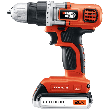Joining Plastic and Metal Plumbing
Written by Lee Wyatt (last updated November 4, 2019)
There are several instances where you may find yourself needing to join plastic and metal plumbing together. It may seem like this may be a particularly difficult task, but the truth is it is remarkably easy to accomplish. As long as your pipes are in good repair, all you need to do is follow these directions.
- Get your materials. Joining plastic and metal plumbing will require that you use specific materials. For this specific task you will typically need some pipe threading compound, plumbers tape, double-threaded female metal adapters, male plastic threaded adapter, PVC primer, and PVC cement. Most, if not all, of these items can be easily obtained at your local home improvement store.
- Look at the pipes. Inspect the pipes, and check to make sure that they are in good working order. If they are not, you will need to remove, replace, or repair the damaged portions of the pipe. That being said, all you will typically need to do is ensure that the ends of the pipes are in good condition, since those are the first parts of the pipe that break.
- Use an adapter. Wrap the threads of the male PVC adapter with plumbers tape, and the interior threads of the metal female adapter with plumbers compound. Be sure that you only coat the threads that will be coming into contact with each other at this time. Place the coated threads next to each other and begin twisting the adapters so that they tighten and form a solid seal. Do not over tighten the adapters as that can damage the adapters and possibly break them. The ideal tool to use to tighten the adapter is a pipe wrench, just be careful so you don't do any damage to anything breakable.
- Apply tape or compound. Apply either plumbers tape or plumbers compound to the end of the metal pipe. These are the best materials to help bind the metal pipe to the adapter.
- Apply PVC primer. Coat the exterior of the PVC pipe, and the interior the PVC pipe adapter with the PVC primer. This will help prepare the PVC material for the bonding process. Once the primer has been applied, repeat the process with the PVC cement.
- Attach pipe and adapter. When the pipes and adapter have been prepared, or as each pipe and adapter has been prepared go ahead and attach the pipes and adapters as described in step three. Once again, be careful that you don't over tighten anything since it can potentially damage the pipes if you do.
Repeat the entire process as often as necessary to join all the metal and plastic pipes in your home. While you can find metal and PVC pipes throughout your home there are a couple of places that you can typically find these two types of pipes. Metal pipes can typically be found attached to the drain holes of sinks, bathtubs, and even showers. PVC or plastic pipes can often be found in the rest of the house.
Author Bio
Lee Wyatt
Contributor of numerous Tips.Net articles, Lee Wyatt is quickly becoming a regular "Jack of all trades." He is currently an independent contractor specializing in writing and editing. Contact him today for all of your writing and editing needs! Click here to contact. Learn more about Lee...
Caring for Potted Rose Plants
There are a variety of reasons that people choose to place their rose plants into pots or other kinds of containers. ...
Discover More
When to Rake the Lawn
Whether it is due to the annual change of weather or because of a sudden storm there are times when we have to rake the ...
Discover More
Cleaning a Baseball Cap
Baseball caps are one of the more popular hat choices in today's world, and as such a very common clothing accessory. ...
Discover More
More Home Improvement Tips
Replacing a Gas Water Heater
When it's time to replace your water heater, consider switching from electric to gas. Gas water heaters cost ...
Discover More
Locating the Water Shutoff Valve in Your Home
Whether you plan on doing some home plumbing repairs or not, there is one thing that every homeowner should know about ...
Discover More
Dealing with Low Water Pressure
Dealing with low water pressure doesn't necessarily mean that you have to hire an expensive plumber. Rather, what you ...
Discover More

Comments